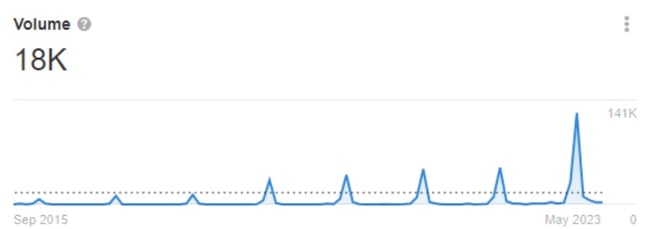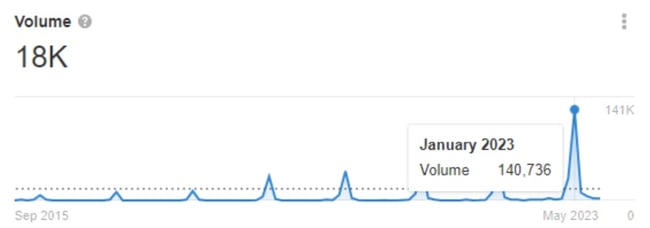Dry January is Big Bucks for Booze Makers
- January 17, 2024
- Knowledge Base
- 0 Comments

Dry January. It sounds like the next scary impact of climate change. In reality, it’s part personal challenge and part social movement.
Dry January refers to the growing trend of taking the month off from drinking alcohol. Consider it a four-week vacay for your liver.
But it’s not meant to be a detox. Instead, the creators say the goal is to reframe your relationship with alcohol as “a conscious choice, not a default.”
It might seem like bad news for alcohol sales– already reeling from the post-holiday slump– but actually, Dry January is one way booze sellers can tap into a half-billion-dollar market.
Why ask why? Try going dry.
Though the Dry January trend is currently having a moment, it’s actually existed in some form for decades. In 1942, Finland promoted “Raitus Tammikuu” or “Sober January” as a way to ration resources.
It took its current shape in 2013 when the London-based charity Alcohol Change UK launched it as a personal challenge.
Since then, searches for “Dry January” have grown exponentially to an average of 18,000 per month. Although, in a sign that people are as bad at planning as me, the searches only appear around January.

And that seasonality is masking the popularity by dragging the monthly average down. Take a look at these screenshots from the SEO tool Ahrefs, and you’ll see that there were over 140,000 searches in January of 2023.

But are those searches turning into participants? According to a survey by the business intelligence firm Morning Consult, 21% of Americans over 21 will be trying Dry January this year.
A different survey by NielsenIQ puts that closer to a whopping 44% of American adults.
That’s a buttload of buyers bailing on the booze!
So, what does that mean for alcohol makers and sellers?
Businesses and Participants Turn to Non-Alcoholic Alternatives
A common complaint you’ll hear from participants is finding a replacement for the sense of community and ritual that comes with having a drink.
People still want to meet co-workers at a bar. They still want that ceremonial first sip that transitions from work to play.
And so, the rise of Dry January also brings a rise in demand for non-alcoholic alternatives.
This makes the movement a great introduction for new consumers into the non-alcoholic beverage market that topped $510 Million in annual domestic sales, according to Nielsen.
That represents a 31% increase in sales year-over-year.
Globally, the IWSR puts retail sales for low- and non-alcoholic beverages at $13 Billion annually.
That’s enough to make some major brands sit up and take notice. White Claw, Tanqueray, Guinness, and even Budweiser have all started serving up non-alcoholic versions of their products.
Even celebs are getting in on the action. Blake Lively, Katy Perry, Kylie Minogue, and Bella Hadid have all recently launched lines of alcohol-free wines or spirits.
And the data shows that this trend isn’t likely to go away. A Gallup poll from 2023 found that the percentage of young adults (18 to 34) who drink alcohol – ever – has fallen from 72% to just 62% over the last two decades.
But if you’re too late to jump in on Dry January, don’t panic. You’ve got plenty of time to plan your Sober October.
![Download Now: The State of U.S. Consumer Trends [Free Report]](https://no-cache.hubspot.com/cta/default/53/ebf9ec8e-a468-455a-943e-80aa4e6be694.png)




